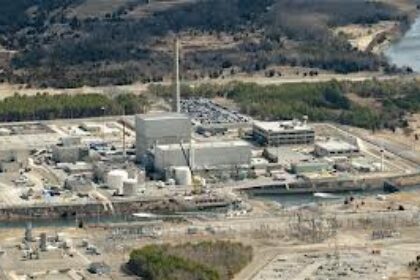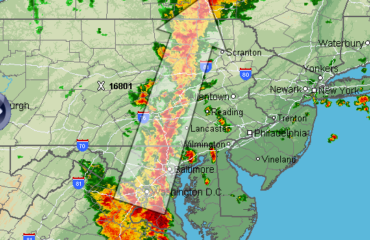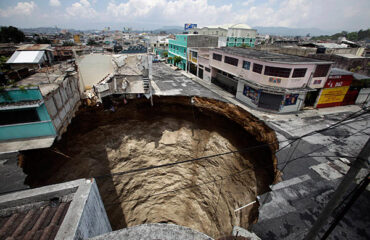 [header1]
[header1]
(Reuters) – At least two major New Jersey nuclear power plants are likely to shut on Monday as Hurricane Sandy makes landfall as a Category 1 storm and more plants could reduce power as the storm triggers precautionary safety measures.
In Connecticut, Dominion Resources Inc already reduced the output of its Millstone 3 reactor from full power to about 75 percent as a precaution due to high water levels caused by Sandy, the U.S. Nuclear Regulatory Commission (NRC) said.
Sandy, centered over the Atlantic Ocean about 175 miles southeast of New York City, was expected to hit near Delaware and south New Jersey later Monday as a Category 1 hurricane with winds of up to 90 miles per hour.
The nuclear reactors in Sandy’s current path include units at Public Service Enterprise Group Inc’s 2,332-megawatt (MW) Salem and 1,161-MW Hope Creek plants in New Jersey, which were likely to bear the brunt of the storm before it moves inland. Those PSEG reactors combined account for about 19 percent of the state’s total electric capacity, although New Jersey also draws supplies from the whole Pennsylvania, New Jersey, Maryland (PJM) power region.
PJM is the biggest power grid in the United States serving more than 60 million people in 13 U.S. Mid-Atlantic and Midwest states and the District of Columbia.
Electricity traders said if Sandy continues on her expected path it was likely PSEG would have to shut the Salem and Hope Creek reactors later Monday, but they were mixed on whether the storm’s winds would still be strong enough to force the shutdown of reactors in Pennsylvania and Maryland.
PSEG spokesman Joe Delmar said the company would take the Salem and Hope Creek reactors offline if wind speeds reach greater than 74 miles per hour onsite for more than 15 minutes or the river water level reaches 100 feet. Sandy’s maximum winds were at 90 mph earlier on Monday.
The mean river water level at the Salem-Hope Creek site was 89 feet and the site grade was about 102 feet. The highest river level ever recorded was 97.5 feet, Delmar said.
But Sandy was expected to lose some punch as she moves over Pennsylvania and Maryland, crossing near Constellation Nuclear Energy Group’s 1,705-MW Calvert Cliffs nuclear plant in Maryland, Exelon Corp’s 2,244-MW Peach Bottom, 805-MW Three Mile Island and 2,264-MW Limerick in Pennsylvania, and PPL Corp’s 2,450-MW Susquehanna in Pennsylvania.
All U.S. reactors have procedures that require operators to shut the units when hurricane-force winds reach their sites or when floodwaters reach certain levels.
Nuclear power represents about 18 percent of the generating capacity in the U.S. Mid-Atlantic region. One megawatt powers about 1,000 homes.
A few reactors in the area were already shut for refueling or other maintenance, including Exelon’s Oyster Creek in New Jersey, PSEG’s Salem 2 in New Jersey, PPL’s Susquehanna in Pennsylvania and Dominion’s Millstone 2 in Connecticut.
Both Salem Unit 1 and Hope Creek were at full power Monday morning and the refueling work on Salem Unit 2 was suspended by 6 p.m. EDT Sunday, Delmar said.
WIND AND FLOOD WATER
Delmar said only essential personnel were required to report to the Salem and Hope Creek site on Monday.
He said PSEG was in Phase 2 of its severe weather plan.
Phase 1 included inspecting, removing and securing objects outside that could become airborne and putting emergency equipment and supplies in place.
Phase 2 of the plan includes visual inspections of equipment, verifying weather tight doors, checking on emergency diesel availability, and ensuring water intakes are prepared for severe weather.
Power companies from North Carolina to Maine have been preparing for Sandy for days and urged customers to be ready for the possibility of days without electricity. More than 700,000 homes and businesses were already without power Monday afternoon.
The Long Island Power Authority, which serves 1.1 million people on Long Island, New York, and others said outages could last as long as seven to 10 days.
IRENE ALSO SHUT NUCLEAR PLANTS
The last big storm to hit the U.S. East Coast was Hurricane Irene in 2011, which made landfall in the Outer Banks in North Carolina as a Category 1 storm. Irene caused billions in property damage as it ran up the coast from Carolinas to Maine.
Irene left more than eight million homes and businesses without power, some for a week or more in the hardest hit areas. It forced many power plants to shut, including at least two reactors, at Oyster Creek in New Jersey and Calvert Cliffs in Maryland.
Several other reactors had to reduce power primarily due to debris in their cooling water intakes and other reasons, like Duke Energy Corp’s Brunswick in North Carolina, Dominion’s Millstone in Connecticut and PSEG’s Salem in New Jersey.
October 29, 2012|By Scott DiSavino | Reuters.
[representyouinsurancepolicies] [footer1]


